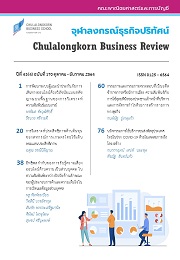Cost Efficiency Analysis of Agricultural Cooperatives using Frontier Analysis
Main Article Content
Abstract
This research aims to measure and analyze the efficiency of Thai agricultural cooperatives during 2011- 2020 by applying an efficient frontier analysis technique. The Stochastic Frontier Analysis with 1,479 cooperatives that operated during the 10 years was used to construct a cost frontier. The translog cost function was employed to estimate parameters in the cost model. From estimated efficiencies, overall, the cost efficiency scores of agricultural cooperatives over the past 10 years have declined. Cooperatives in each region varied in their cost performance. The agricultural cooperatives in the southern territory had the highest average efficiency, whereas those in the eastern part had the lowest score. Regarding the sub-types of agricultural cooperatives, dairy cooperatives had the highest cost efficiency, whereas water users’ cooperatives in irrigated areas had the lowest value. The results showed that cooperatives with many members operated with higher cost efficiency than those with few members. The cooperative reserve fund appeared to be an important factor in generating cost efficiency. Thus, to promote agriculture cooperatives, understanding the differences in the cooperatives’ business environment, promoting participation in doing business with cooperatives, and cooperatives’ reserves allocation should be carried out for the sake of long-term cost efficiency.
Article Details
Opinions and discussions in papers published by the Creative Business and Sustainability Journal (CBSJ) are deemed as personal opinions and the responsibility of the writers. They are not the opinions or responsibility of the Chulalongkorn Business School of Chulalongkorn University.
Papers, content, information etc. appearing in the Journal are deemed to be the copyright property of the Chulalongkorn Business School of Chulalongkorn University. Anybody or any organization that wishes to publish any part of them or use them in any way must obtain written permission from the Chulalongkorn Business School, Chulalongkorn University.


